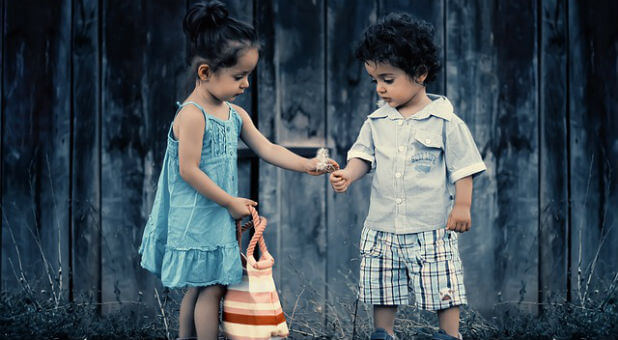In the movie Pay It Forward, a seventh-grade boy named Trevor comes up with an idea to change the world. He helps three people with big things they can’t do themselves. In turn, they are not allowed to pay him back; they must pay it forward: three big favors for three other people. His mom, Arlene, is part of the chain. One of her big favors is for her mom, a homeless alcoholic whom she hasn’t seen in three years. In a powerful scene, Arlene meets with her mom and says, “All of things that happened when I was a kid. All of the booze and the men, all of the things that happened while you weren’t looking. Here’s the thing … I forgive you.” Her mom exhales, and you can see the weight begin to depart her.
Giving forgiveness is both difficult and beautiful. When we forgive, we set healing in motion. The opposite deepens wounds and disconnection. Instill in your children the ability to forgive and let go. It will bring them peace in their lives and relationships. Here are 10 ways to teach your child how to forgive.
1. Sibling Arguments
All siblings bicker and fight. This provides the perfect training ground for giving and receiving grace. Kids need to learn reconciliation. Train them how to do it and be consistent in reinforcing the principles of forgiveness with even the smallest issues.
2. Unconditional Forgiveness
Teach your kids to forgive regardless of the other person’s response. What matters is that your child has feelings that need to be released. Unconditionally forgive even when it’s not reciprocated.
3. It’s Not About Being Right
When you forgive someone, it should never be about being right. It’s about the relationship being right. Teach your kids to care more about that.
4. No Stipulations
By placing stipulations on our forgiveness, we are not truly forgiving. “If you make my bed for the next week, I’ll forgive you.” That’s extortion, not forgiveness. Forgiveness is given without expectations or conditions.
5. Give It Time
We can’t make our children forgive someone. If we pressure them to say something when they don’t mean it, nothing gets solved. Explain the importance and the benefits of forgiving, however, the actual act must come from their heart and not our demands. Give it time.
6. Teach Perspective
We tend to only see our side of an issue. We need to teach our kids to be able to see things from the other side. Our side is only part of the story. Forgiving is much easier when we know the whole story and not just half of it.
7. Don’t Be Held Back
What do you gain by holding a grudge? Feelings of resentment keep us from moving forward. We end up stuck in emotions from past experiences. Bitterness lurks below the surface ready to rear its ugly head. Forgiveness releases it and gives us a clean slate for new experiences and emotions.
8. The Inside Eventually Comes Pouring Out
If you are filled with bitterness, then that’s what you’ll give others. You can’t get clean water from a dirty source. Fill your heart and mind with peace and forgiveness, so you’ll be ready to pour that into others.
9. Teach Them to Serve
Volunteer at a homeless shelter. Go on a mission trip where your children can learn to serve others. Giving forgiveness takes humility. Build a spirit of humility by being mindful of the needs of others.
10. The Golden Rule
“Treat others as you wish to be treated yourself.” Ask your kids how they would want someone to respond when they did something wrong. They would want to be forgiven. Then tell them to do likewise.
Question: Why is forgiveness so hard? {eoa}
This article originally appeared on allprodad.com.











































